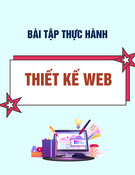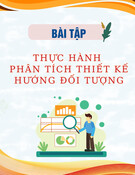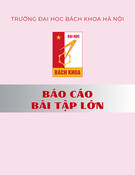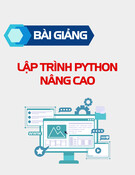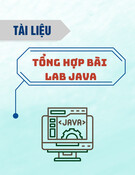
http://www.iaeme.com/IJM/index.asp 145 editor@iaeme.com
International Journal of Management (IJM)
Volume 7, Issue 6, September–October 2016, pp.145–155, Article ID: IJM_07_06_016
Available online at
http://www.iaeme.com/ijm/issues.asp?JType=IJM&VType=7&IType=6
Journal Impact Factor (2016): 8.1920 (Calculated by GISI) www.jifactor.com
ISSN Print: 0976-6502 and ISSN Online: 0976-6510
© IAEME Publication
A STUDY OF INFORMATION AND COMMUNICATION
TECHNOLOGY (ICT) ADOPTION BY SHG’S IN
BANKING ACTIVITIES - DHARWAD DISTRICT
Dr. Vinod N Sambrani
Associate Professor, Kousali Institute of Management Studies,
Karnatak University, Dharwad, India.
ABSTRACT
We all understand that, technology has been playing a major part in our daily lives. And ICT has
established a vast platform for drastic development. Information exchange and information update
is the need of the hour. People need up-to-date information, either for themselves or for their
organization, and this need can only be meet with utilizing ICT platform. On the other hand SHG’s
have been playing a significant role in micro-finance, especially in rural areas empowering the rural
women resulting in better livelihood and lifestyle, where most of the people are illiterates or are with
just primary education. These SHG’s are linked with many banking institution for all their savings.
This article aims to understand the role of technology that can be introduced by banks to ease the
lives of many members of the SHG’s in their banking activities. UTAUT Model developed by
Venkatesh et.al (2003) has been considered and used to ascertain the users acceptance and adoption
of technology in the region of study.
Key words: Information and Communication Technology, UTAUT Model, Self Help groups,
Technology Adoption, Technology Acceptance, Rural Banking, Micro-financial Institutions.
Cite this Article: Dr. Vinod N Sambrani, A Study of Information and Communication Technology
(ICT) Adoption by SHG’s in Banking Activities - Dharwad District. International Journal of
Management, 7(6), 2016, pp. 145–155.
http://www.iaeme.com/IJM/issues.asp?JType=IJM&VType=7&IType=6
1. INTRODUCTION
Information Technology (IT) plays a significant role in todays’ world, and financial institutions are the
backbone of the any economy. The IT revolution has opened many avenues for Indian Banking sector at
present. Almost all the nationalized banks in India are using technology based solutions to overcome the
competition and address the needs of the customer in a more befitting manner. The manual operations in
traditional banking have drastically been reduced with the use of IT applications, thus creating a centralized
environment from distributed environment. This impact of IT in banking sector has revolutionized the
process being done with a faster, effective and efficient pace. Bankers are offering customized products and
services to their customers using new tools and techniques, which help in understanding the consumer needs.
IT impact in this sector is very difficult to be measured.

Dr. Vinod N Sambrani
http://www.iaeme.com/IJM/index.asp 146 editor@iaeme.com
On the other hand, the Indian rural consumption pattern has changed drastically and is growing at a faster
rate, compared to towns and cities, according to a report by credit rating agency CRISIL Ltd. The non-
agricultural job opportunities and government initiatives of employment generation schemes have
contributed in large for such a growth in terms of raise in house hold incomes. However, technologies for
rural communities are being developed by many voluntary organizations. But, the fact remains that these
technologies have barely touched the rural population. Rural development is in place and happening in terms
of improvement in infrastructures, access to better resources, education, health and hygiene. It is most
common to have access to at least one mobile phone in every rural households.
A sustaining livelihood in these fast growing villages and cities can only be achieved through a most
important driver “Information Exchange”. ICT has been playing a vital role in the development of rural
India, increasing its growth in a drastic manner. Technology has largely been playing a dynamic role in our
day to day life, need it be a community radio or mobile phone based farmer information services or health
related technological solutions. It is clearly evident that, most of this current fast growth is only because of
the technology dissemination in small to medium and large scales across India.
Opportunities are still abundant to scale and integrate these technologies amongst the rural population,
with consistent effort to simplify the processes and finding better ways to make them affordable to improve
the lives of people in India.
People with common mindsets have all the time come together to either to overcome their difficulties or
for betterment of their lives. When compared to such groups, Self-Help Groups (SHGs) have unique
characteristics, and different working patterns. In late 1980’s community development discipline was
established sharing the concepts of empowerment. In a couple of decades the concept of SHGs have deep
rooted drastically in India.
In most cases, the people in SHGs are the ones who are most affected by a specific issue, who come
together and support each other to overcome such issues affecting their lives. Activities that groups do
include community education, information sharing, mutual support etc.
Definition: Self-Help Group
“Self Help group (SHG) is a self-governed, peer-controlled small and informal association of the poor,
usually from socio-economically homogeneous families who are organized around savings and credit
activities.”
Most of the funding for such activities comes from the group members regular saving deposited on
weekly basis. During their interactions/ meetings they discuss on common issues and plan to overcome them
with solutions through consultation. They also share vital information across the group and make diligent
efforts to improve their literacy as well as health. SHG’s are not charity or simply community based groups.
Although the work is usually unpaid, members work to change their own economic and financial conditions
and the support is mutual. The knowledge base of self-help mutual support groups is experiential,
indigenous, and rooted in the wisdom that comes from struggling with problems in concrete, shared ways.
2. LITERATURE REVIEW
Most of the SHGs are linked with NGO’s active in their respective areas for assistance of any kind or
dependent on the co-operative banks or societies or micro-financial institutions for their financial aids. SHGs
have another very important role to play particularly in the transfer of technology to user group population.
Until mid-1960’s, the Co-operative banking sector was entrusted the responsibility of fulfilling the credit
needs of the rural people in India. With the advancement in technology, commercial banks started to
penetrate by expanding their branches and direct lending in the rural areas, especially for the agricultural
sector. The massive branch proliferation of nationalized banks helped the people in farthest areas to have
access to financial services. According to Bell, 1990 the growth and extension of rural credit banished village
financiers to a substantial extent and led to modest increases in comprehensive crop output, strident increase
in the use of fertilizers/ pesticides and in investments in tangible assets like tractors, pump sets and animal

A Study of Information and Communication Technology (ICT) Adoption by SHG’s in Banking Activities -
Dharwad District
http://www.iaeme.com/IJM/index.asp 147 editor@iaeme.com
stocks. Binswanger and Khandker, 1992 noted that, a substantial positive effect is seen in non-farm
employment.
The Information Technology (IT) saga in Indian Banking sector commenced from the mid-eighties when
the Reserve Bank of India (RBI) took upon itself the task of promoting computerisation in banking to
improve customer services, book keeping, Management Information System (MIS) to enhance productivity.
RBI has played the guiding role which helped banks in achieving various objectives such as the introduction
of MICR based cheque processing, Implementation of the electronic payment system such as RTGS (Real
Time Gross Settlement), Electronic Clearing Service (ECS), Electronic Funds Transfer (NEFT), Cheque
Truncation System (CTS), Mobile Banking System etc. The Payment and Settlement Systems Act, 2007
(effective from August 12, 2008) designates the RBI as the authority for regulation and supervision of
payment systems in India.
Electronic Banking as referred by Suoranta & Mattila (2004); Laforet & Li (2005); Laukkanen (2007);
Sripalawat et al. (2011) are all related to the use of Internet Banking and Mobile Banking. As we understand,
both internet banking and mobile banking are two different aspects for banks to deliver their services.
Scornavacca & Hoehle (2007) also refer in their article that, customers also acquire these services for all
their banking activities. Riquelme & Rios (2010) state that, customers in order to use Internet Banking are
required use this service through computers connected to Internet, whereas for mobile banking, they are
using through wireless devices. Suoranta & Mattila (2004), and Singh et.al, (2010) found that, time-critical
customers preferred mobility as their first choice with the use of mobile banking. Koenig-Lewis et al. (2010)
also found that, online banking was the only cheapest mode of delivering banking services.
Despite of having many studies been carried out with respect to technology usage in banking sector. And
relevant developments and advancements have already taken place. Still there is a lot need to study and
improvise with the current scenarios.
3. OBJECTIVES OF THE STUDY
• To ascertain the technology adoption by the members of SHG’s.
• To know and understand the need of technology by SHG members in banking activities.
• To understand the Bank roles in disseminating ICT initiatives to the SHG’s.
4. RESEARCH METHODOLOGY
The study conducted is quite exploratory in nature, because no known hypothesis was developed. Hence the
objective called for an exploratory research instead of a conclusive one.
The information needed were not available from secondary sources hence involves primary data
collection. Primary data was collected after using structured questionnaire developed in reference with the
UTAUT model mentioned below.
Sampling Technique: Random Sampling
Sampling Unit: Member or Leader of SHG’s
Sample Size: 150 SHG’s
Population of Study: SHG’s in Dharwad District
4.1. Model Used
After analysing various other literature on technology acceptance, the use of Unified Theory of acceptance
and Use of technology (UTAUT) model is found to be suitable for the said study.

Dr. Vinod N Sambrani
http://www.iaeme.com/IJM/index.asp 148 editor@iaeme.com
The model is as follows:
Figure 1 Source: Venkatesh et.al., (2003)
5. FINDINGS
A pilot study using the earlier questionnaire was done to validate the investigation mechanism. Feedback
about the layout of the questionnaire and question ambiguity was obtained. Relevant changes were done to
the questionnaires as considered suitable. The revised questionnaires were circulated across all the talukas
and villages in the district. The data collected using the questionnaire was tabulated, analyzed and presented
in tables and descriptions. The demographic profile of respondents were also collected. Table 1 exhibits the
sample characteristics, usage and awareness.
5.1. Demographic Profile of the Respondents
Items/Parameters Frequency Percentage
Gender
Male 11 7.3
Female 139 92.7
Age Group
18-23 9 6.0
24-28 11 7.3
29-34 59 39.3
Above 35 71 47.3
Education Level
Primary 56 37.3
Secondary 52 34.7

A Study of Information and Communication Technology (ICT) Adoption by SHG’s in Banking Activities -
Dharwad District
http://www.iaeme.com/IJM/index.asp 149 editor@iaeme.com
Technical or Vocational 5 3.3
University 20 13.3
No formal Education 17 11.3
Duration of Bank operations
1 Year 7 4.7
2 Years 16 10.7
Above 2 Years 127 84.7
Frequency of ICT Enabled Banking Services usage
Never 119 79.3
Once in a week 4 2.7
Once a month 24 16.0
Many times in a month 3 2.0
ICT enabled Banking services awareness
No Awareness 119 79.3
Mobile Banking and ATM 1 .7
Mobile Banking and SmartPhone App 4 2.7
Internet Banking 2 1.3
ATM/ E-Kiosk 24 16.0
Table 1 Demographic Profile of Respondents
Table 1 exhibits that, 92.7% of the respondents were females, as compared to males. This is quite obvious
because, most of the established SHG’s are created to empower women in these areas. Very few male SHGs
are active and functional. 47.3% of the respondents are above 35 in age, and either leader(s) or second
leader(s) member in the groups. 88.7% of the respondents are literates with at least primary schooling
(37.3%). About 84.7% of the respondents are directly involved in banking transactions.
6. ASSESSMENT OF VALIDITY
Construct power is a concern of seriousness between the constructs. For the current research, 19 different
items are selected, classified into five different constructs in the UTAUT model. The renamed abbreviation
and descriptive figures of each construct and item are presented in Table 2:

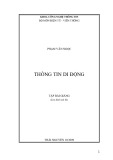
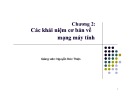
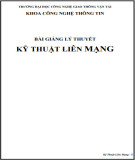
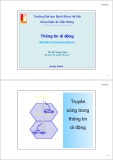
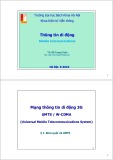
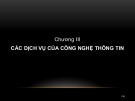
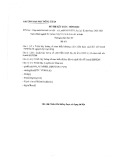



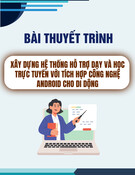
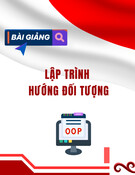
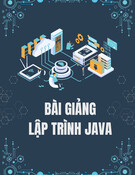
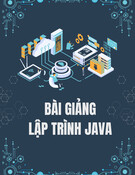
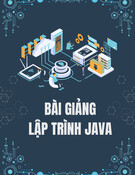

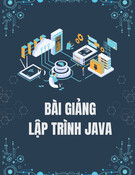
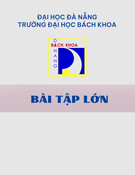
![Hệ thống quản lý cửa hàng bán thức ăn nhanh: Bài tập lớn [chuẩn nhất]](https://cdn.tailieu.vn/images/document/thumbnail/2025/20251112/nguyenhuan6724@gmail.com/135x160/54361762936114.jpg)
![Bộ câu hỏi trắc nghiệm Nhập môn Công nghệ phần mềm [mới nhất]](https://cdn.tailieu.vn/images/document/thumbnail/2025/20251111/nguyenhoangkhang07207@gmail.com/135x160/20831762916734.jpg)
